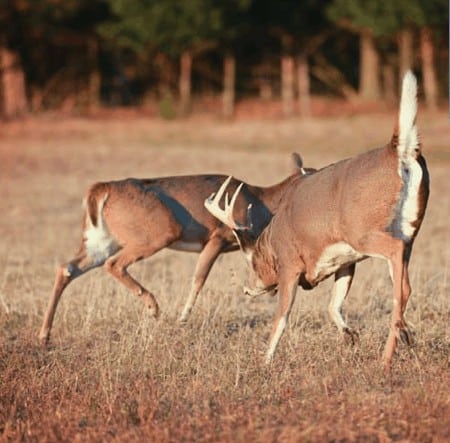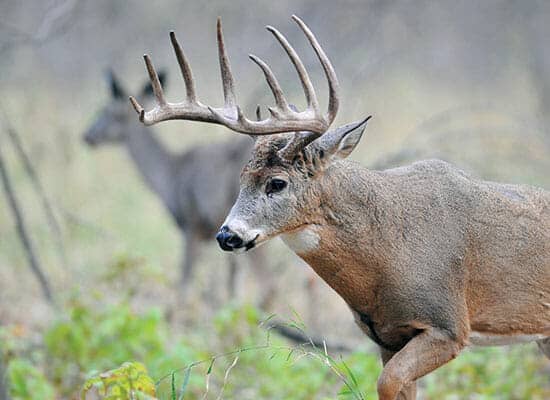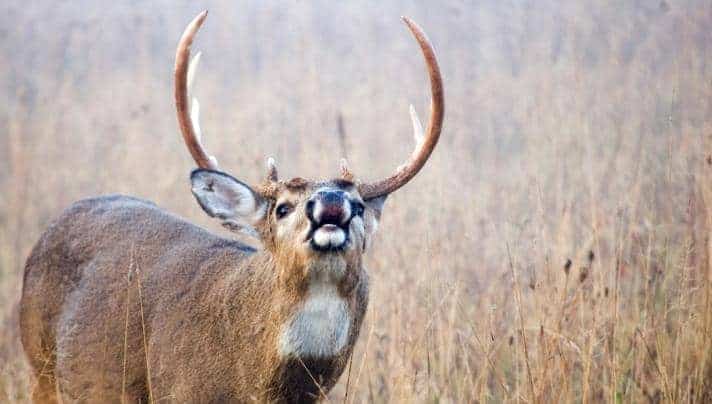The whitetail rut, also known as the best time of year. We wait all year to be able to get into the woods during this prime time, so we can get those big bucks and make stories that we can tell a thousand times over again. But do you know the specifics of the rut? What exactly is the rut? Why is there a rut and what triggers it? When is the rut, or how long is it? We will explore these questions and see how we can use them to your advantage in order to make you a better hunter.

The rut is known as the mating season for mammals. Unlike humans, all animals cannot mate year-round so they have a strategic season, normally during fall, so offspring can be born during springtime when food is plentiful. The rut is triggered by the photoperiod, which is the ratio of daylight hours to darkness hours throughout the day. For whitetail deer, the rut starts in late October and ends in early December, but it can vary by a few days between populations. We can also break the rut down into different phases: pre-rut, early rut, full rut, post-rut, and the second rut.
What is The Rut
According to biologists, the rut is a broad term for the mating period of mammals. We mostly only hear of the term “rut” when we are talking about members of the Cervidae family, such as deer, elk, or moose. The rut causes males of the species to increase testosterone levels, this increases their aggression and interest in females. During the rut, males perform many displays or actions in order to entice females. This causes males to become more active and reckless, putting themselves in situations they normally would not.
In whitetails we see that they will fight each other, make a scrape or rub in order to spread their sent and unconsciously start to swell their necks throughout the rut in order to look bigger and more intimidating. They will also start to heavily urinate on their tarsal glands causing staining and a strong scent.
RELATED POST: WHY DO BUCKS RUB TREES?

Why is There a Rut
Most every species has a rut, but why? Humans mate year round and produce offspring year round as well. What keeps other animals from doing the same thing? My theory, the seasons and temperatures. If a species gave birth during fall or winter, odds are it will be very difficult for that baby to survive the winter. Especially in deer where fawns move around, but also hide in one spot for hours. This behavior could lead to many offspring freezing to death. Not to mention the availability of food throughout the winter is significantly less that it is in the spring. So because of those factors, the odds of survival are much higher if a species give birth during a warm and fruitful season, also known as spring. So The rut is timed perfectly to accommodate the gestation period of a whitetail doe, which is about 7 1/2 months long.
When is The Rut
Generally the entire rut will go from October to December. There are also a few different phases to the rut as well, and we see different behavior in each phase. This means we need to hunt each of them different and study our deer to see how they are behaving. What are these phases and how can you use them to your advantage?
Phases of The Rut
Pre-Rut
This period is around the second week of October, to the third week of October. During this period bucks start to roam into their fall ranges and patterns. they start to change their behaviors slightly and will cover more ground. Bucks are still in bachelor groups, and does are still in family groups. The two groups will often mix together at food sources. Buck testosterone levels are slightly increasing.
Bucks are not chasing quite yet. These bucks are laying down a lot of sign through rubs and scrapes. Hunting pressure has likely pushed these bucks back into more wooded areas that are safe and have plenty of food.
It is important when you are scouting to find an area that will fit this bill. It will likely be a secluded area with a few trails and acorn trees. They love the thick areas, so if you can find one with a good about of acorns and general deer sign then that is a good spot for pre-rut hunting.
Early Rut
This period is the last week of October and maybe the first day or so of November. Some does are starting their estrus cycles, and bucks are breaking up from their bachelor groups and are becoming more reckless. They are experiencing high levels of testosterone .
There is a heavy amount of buck sign now. Bucks are starting to move much more but they are still not chasing quite yet. You may see a young buck chasing but not any bruisers. Bedding areas are probably your best bet for a good hunting spot during this week.
Full Rut
The best two weeks of the year, The first two weeks of November. Bucks are going crazy, and chasing does hard. Buck testosterone is at its peak, most does are in or coming into estrus. Bucks increase their ranges even further and are moving at all hours of the day.
A good strategy during this period is to hunt tree lines and trails, doe bedding areas are also an effective strategy. Now your rattles and grunt calls will be really effective. This is the best time to be in the woods and is your best chance of getting a nice buck.
Post Rut
This period occurs during the last week of November. The rut as a whole is slowing down and most does are already bred, but some does will come into estrus during this week. The deer are feeling a lot of pressure from hunters around this time, they are trying to stay in the safest places possible.
Buck activity is slowing down and they will not come out as much in the daylight. Bucks will be harder to hunt than the last two weeks, but bedding areas that are in thick secluded areas are a good place to look, but your normal rut stands will still be really effective.
Second Rut
Hunting is much tougher after the post-rut, the second rut occurs during the first two weeks of December. Mature does that were not bred are now cycling back into estrus, as well as young does that are now big enough to be bred. You may get a few days that will remind you of the full rut, many of the same tactics will work once more.

Thanks for reading my article about the whitetail deer rut. I hope you enjoyed it and learned something you didn’t already know. If you like my content, subscribe to my weekly update. If you have any other questions about the whitetail rut or just want to connect, feel free to email me at Patrick.Long@omegaoutdoors.net.
